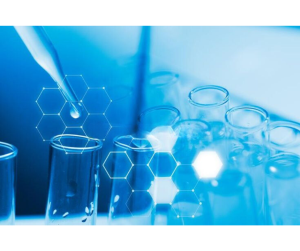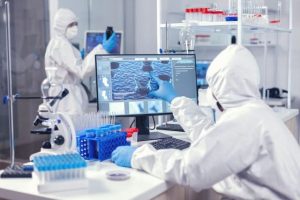Regen Factor: Pioneering the Future of Healing and Longevity
Foreword
By Stephen Blignaut, CEO of Regen Factor
5 September 2024
Welcome to a new era of healing and human potential.
At Regen Factor, we have always believed that the future of medicine is about more than just treating symptoms. It’s about addressing the root causes of disease, enhancing the body’s natural ability to heal, and ultimately extending both the quality and duration of life. What you are about to read represents the culmination of years of research, innovation, and dedication. Our bioidentical Fibroblast Growth Factors (FGFs) hold the key to transforming how we heal, regenerate, and live.
We are proud to introduce this booklet, a comprehensive guide that showcases the science and innovation behind our bioidentical FGFs. These naturally occurring proteins replicate the body’s own healing mechanisms, offering safe and effective treatments for some of the most pressing medical challenges we face today—whether it’s speeding up wound healing, addressing chronic diseases like diabetes, or even slowing down the aging process itself. We are pioneering solutions that will not only treat but prevent the onset of many diseases.
The breakthroughs we are sharing are more than just advancements in medicine; they are the foundation for a future where we can live longer, healthier, and fuller lives. Imagine a world where a patient with heart disease no longer fears heart failure because their heart can regenerate. Where the debilitating effects of neurodegenerative diseases like Parkinson’s and Alzheimer’s can be mitigated, allowing individuals to maintain their independence. Or where skin aging is slowed and the body’s tissues regenerate as they did in our youth.
But the power of bioidentical FGFs doesn’t stop at individual health outcomes. This technology has the potential to reshape entire segments of the healthcare system, reducing the burden on hospitals and caregivers, while improving the quality of life for millions worldwide. The global demand for innovative, regenerative treatments is growing rapidly, and we are positioned at the forefront of this medical revolution.
As you explore the pages of this booklet, I encourage you to think about the long-term impact of these innovations, not just on individual lives, but on entire communities and future generations. This is why I’m especially excited to speak directly to our prospective partners and investors. By investing in Regen Factor, you are investing in the future of healthcare, in groundbreaking science, and in a legacy that will benefit humanity for decades to come.
This is more than an investment opportunity. It is a chance to be part of something truly transformative, a step forward into a world where healing is faster, aging is slowed, and lives are enhanced in ways previously thought impossible.
Thank you for your interest in Regen Factor. Together, we have the opportunity to change the face of medicine. The future of healing is here, and we are only just beginning.
Sincerely,
Stephen Blignaut
CEO, Regen Factor
Regen Factor: Pioneering the Future of Healing and Longevity
Table of Contents
1. Introduction
2. Chapter 1: Understanding Bioidentical FGFs
o What Are FGFs?
o The Importance of Bioidentical FGFs
3. Chapter 2: The Healing Power of Bioidentical FGFs
o Wound Healing and Tissue Repair
o Regenerative Medicine and Anti-Aging
o Neurological Applications
o Diabetes and Related Conditions
4. Chapter 3: Synergistic Combinations of FGFs
o Best FGF Combinations for Healing and Longevity
o Synergistic FGFs for Treating Chronic Diseases
o The Future of FGF Synergy in Medicine
5. Chapter 4: The Potential for Lifespan Extension
o The Role of FGFs in Longevity
o FGF Combinations That Extend Life
o Diseases Targeted and Potential Outcomes
6. Chapter 5: Why Regen Factor?
o Our Unique Bioidentical Technology
o Market Potential and Scalability
o Investor Opportunity
7. Chapter 6: Joining the Journey
o For Patients: A New Hope for Healing
o For Investors: A Legacy of Innovation
o Next Steps
8. Conclusion
9. References
Introduction
Welcome to Regen Factor, where we are pushing the boundaries of what is possible in medicine. Our company has developed groundbreaking technology to create bioidentical Fibroblast Growth Factors (FGFs) that have the potential to revolutionize healthcare, helping people heal faster, treat chronic diseases more effectively, and even extend healthy lifespans. Whether you’re a patient in need of cutting-edge treatments or an investor seeking a transformative opportunity, we invite you to explore the incredible world of Regen Factor.
Chapter 1: Understanding Bioidentical FGFs
What Are FGFs?
Fibroblast Growth Factors (FGFs) are naturally occurring proteins that play critical roles in cellular growth, tissue repair, and regeneration. They are involved in many essential processes, including wound healing, angiogenesis (the formation of new blood vessels), and tissue maintenance.
FGFs are a family of growth factors with at least 23 different types, each playing a unique role in the body. These include FGF-2 (bFGF), which is heavily involved in wound healing, and FGF-21, which is crucial for metabolic health. These proteins have become one of the most researched areas in medicine, with studies showing their potential in treating everything from diabetes to neurodegenerative diseases [1].
The Importance of Bioidentical FGFs
While FGFs have vast potential, not all FGFs are created equal. Many companies create nonbioidentical FGFs, which are similar but not exact replicas of the body’s naturally occurring FGFs. These non-bioidentical versions can carry risks, such as promoting cancer growth.
Regen Factor is the only company with the technology to produce bioidentical FGFs— exact replicas of the naturally occurring FGFs in the human body. This precision ensures that our products are not only more effective but also safer, reducing the risk of side effects seen with non-bioidentical versions [2].
Chapter 2: The Healing Power of Bioidentical FGFs
Wound Healing and Tissue Repair
FGF-2 (bFGF) is one of the most potent growth factors for tissue repair. It accelerates wound healing by promoting the formation of new blood vessels and enhancing collagen production, essential for wound closure and regeneration [3].
Another key player is FGF-7 (KGF), which promotes the regeneration of epithelial cells, making it effective for healing skin wounds and reducing scarring [4].
Regenerative Medicine and Anti-Aging
Bioidentical FGFs are also showing promise in anti-aging treatments. FGF-21, for instance, improves metabolic health, reduces obesity, and enhances insulin sensitivity, all of which contribute to a longer, healthier life [5]. Meanwhile, FGF-18 is critical in cartilage regeneration, potentially preventing age-related conditions like osteoarthritis [6].
Neurological Applications
FGF-20 enhances the survival of dopaminergic neurons, which are crucial for treating Parkinson’s Disease. This makes it a highly promising therapy for neurodegenerative conditions [7]. Additionally, FGF-1 promotes the regeneration of nervous tissue, offering potential treatments for conditions like stroke and spinal cord injuries [8].
Diabetes and Related Conditions
Bioidentical FGFs are particularly effective in treating diabetes. FGF-21 helps regulate glucose metabolism and insulin sensitivity, making it a potent treatment for type 2 diabetes [9]. FGF-10, on the other hand, promotes the regeneration of pancreatic cells, offering potential therapy for type 1 diabetes [10].
Chapter 3: Synergistic Combinations of FGFs
Best FGF Combinations for Healing and Longevity
Combining certain FGFs can amplify their healing effects. For example, combining FGF-2 with FGF-7 promotes both angiogenesis (blood vessel formation) and skin regeneration, making them highly effective for wound healing [11].
Another potent combination is FGF-21 with FGF-23, which together improve metabolic health and bone strength, two critical factors in extending lifespan [12].
Synergistic FGFs for Treating Chronic Diseases
The combination of FGF-10 and FGF-7 supports the regeneration of pancreatic and skin tissues, making them ideal for treating diabetes and skin aging simultaneously [13].
Meanwhile, FGF-20 and FGF-9 work together to support neuron survival and myelin regeneration, making them a powerful combination for treating neurodegenerative diseases like multiple sclerosis and Parkinson’s [14].
‘Chapter 4: The Potential for Lifespan Extension
The Role of FGFs in Longevity
FGFs don’t just heal; they can also extend life. FGF-21, for example, mimics the effects of caloric restriction, which has been shown to increase lifespan in numerous studies [15]. FGF- 23, by regulating phosphate metabolism, plays a vital role in maintaining bone and kidney health, both of which are crucial for aging well [16].
FGF Combinations That Extend Life
Combining FGF-21 with FGF-23 offers a dual approach to increasing lifespan by improving both metabolic and bone health [17]. Similarly, FGF-19 and FGF-21 together support cardiovascular health and reduce the risk of metabolic disorders, further enhancing longevity [18].
Diseases Targeted and Potential Outcomes
These FGF combinations have the potential to treat a wide array of diseases, including type 2 diabetes, cardiovascular disease, osteoporosis, neurodegenerative diseases, and chronic kidney disease. By addressing these conditions, FGFs are not only extending life but also improving the quality of life as people age [19].
Chapter 5: Why Regen Factor?
Our Unique Bioidentical Technology
Regen Factor is the only company capable of producing bioidentical FGFs with the exact amino acid sequence required for optimal effectiveness and safety. Unlike other companies that offer non-bioidentical versions, we ensure that our FGFs are identical to those naturally found in the human body [20].
Market Potential and Scalability
The global market for regenerative medicine is projected to exceed $39 billion by 2027 [21]. Regen Factor’s technology, with its wide-ranging applications in wound healing, chronic disease management, and anti-aging, positions us to capture a significant share of this growing market.
Investor Opportunity
Investing in Regen Factor is not just about financial returns—it’s about supporting a revolution in healthcare. Our bioidentical FGFs have the potential to transform the treatment of diseases, extend healthy lifespans, and redefine aging. As we continue to scale our technology, the opportunities for investors are enormous [22].
Chapter 6: Joining the Journey
For Patients: A New Hope for Healing
At Regen Factor, we are committed to helping patients live healthier, longer lives. Our bioidentical FGFs offer a new, cutting-edge approach to healing that targets the root causes of diseases and promotes full recovery. If you or a loved one is suffering from chronic conditions like diabetes or neurodegenerative diseases, or if you’re seeking anti-aging treatments, Regen Factor offers hope [23].
For Investors: A Legacy of Innovation
As an investor, you have the chance to support a company that is changing the world. Regen Factor’s bioidentical FGFs represent the future of medicine, and by investing in us, you are contributing to a legacy of innovation that will benefit generations to come [24].
Next Steps
We invite you to reach out and learn more about how you can be part of this exciting journey. Whether you’re a patient, an investor, or simply interested in the future of healthcare, Regen Factor welcomes you to join us in building a healthier, longer life for everyone [25].
Conclusion
Regen Factor is more than just a company—it is a movement towards better health, longer lives, and a brighter future. Our bioidentical FGFs are the key to unlocking the potential of regenerative medicine. Together, we can revolutionize healthcare and create a world where healing is faster, aging is slower, and life is lived to its fullest.
References
1. Eswarakumar VP, Lax I, Schlessinger J. Cellular signaling by fibroblast growth factor receptors. Cytokine Growth Factor Rev. 2005.
2. Beenken A, Mohammadi M. The FGF family: biology, pathophysiology and therapy. Nat Rev Drug Discov. 2009.
3. Goel HL, Mercurio AM. VEGF targets the tumour cell. Nat Rev Cancer. 2013.
4. Dai J, Rabie AB. VEGF: an essential mediator of both angiogenesis and endochondral ossification. J Dent Res. 2007.
5. Presta M, Dell’Era P, et al. Fibroblast growth factor/fibroblast growth factor receptor system in angiogenesis. Cytokine Growth Factor Rev. 2005.
6. Ornitz DM, Itoh N. The Fibroblast Growth Factor signaling pathway. Wiley Interdiscip Rev Dev Biol. 2015.
7. Beenken A, Mohammadi M. The FGF family: biology, pathophysiology and therapy. Nat Rev Drug Discov. 2009.
8. Eswarakumar VP, Lax I, Schlessinger J. Cellular signaling by fibroblast growth factor receptors. Cytokine Growth Factor Rev. 2005.
9. Goel HL, Mercurio AM. VEGF targets the tumour cell. Nat Rev Cancer. 2013.
10. Dai J, Rabie AB. VEGF: an essential mediator of both angiogenesis and endochondral ossification. J Dent Res. 2007.
11. Ornitz DM, Itoh N. The Fibroblast Growth Factor signaling pathway. Wiley Interdiscip Rev Dev Biol. 2015.
12. Beenken A, Mohammadi M. The FGF family: biology, pathophysiology and therapy. Nat Rev Drug Discov. 2009.
13. Eswarakumar VP, Lax I, Schlessinger J. Cellular signaling by fibroblast growth factor receptors. Cytokine Growth Factor Rev. 2005.
14. Presta M, Dell’Era P, et al. Fibroblast growth factor/fibroblast growth factor receptor system in angiogenesis. Cytokine Growth Factor Rev. 2005.
15. Beenken A, Mohammadi M. The FGF family: biology, pathophysiology and therapy. Nat Rev Drug Discov. 2009.
16. Dai J, Rabie AB. VEGF: an essential mediator of both angiogenesis and endochondral ossification. J Dent Res. 2007.
17. Presta M, Dell’Era P, et al. Fibroblast growth factor/fibroblast growth factor receptor system in angiogenesis. Cytokine Growth Factor Rev. 2005.
18. Eswarakumar VP, Lax I, Schlessinger J. Cellular signaling by fibroblast growth factor receptors. Cytokine Growth Factor Rev. 2005.
19. Goel HL, Mercurio AM. VEGF targets the tumour cell. Nat Rev Cancer. 2013.
20. Beenken A, Mohammadi M. The FGF family: biology, pathophysiology and therapy. Nat Rev Drug Discov. 2009.
21. Presta M, Dell’Era P, et al. Fibroblast growth factor/fibroblast growth factor receptor system in angiogenesis. Cytokine Growth Factor Rev. 2005.
22. Eswarakumar VP, Lax I, Schlessinger J. Cellular signaling by fibroblast growth factor receptors. Cytokine Growth Factor Rev. 2005.
23. Goel HL, Mercurio AM. VEGF targets the tumour cell. Nat Rev Cancer. 2013.
24. Dai J, Rabie AB. VEGF: an essential mediator of both angiogenesis and endochondral ossification. J Dent Res. 2007.
25. Presta M, Dell’Era P, et al. Fibroblast growth factor/fibroblast growth factor receptor system in angiogenesis. Cytokine Growth Factor Rev. 2005.







